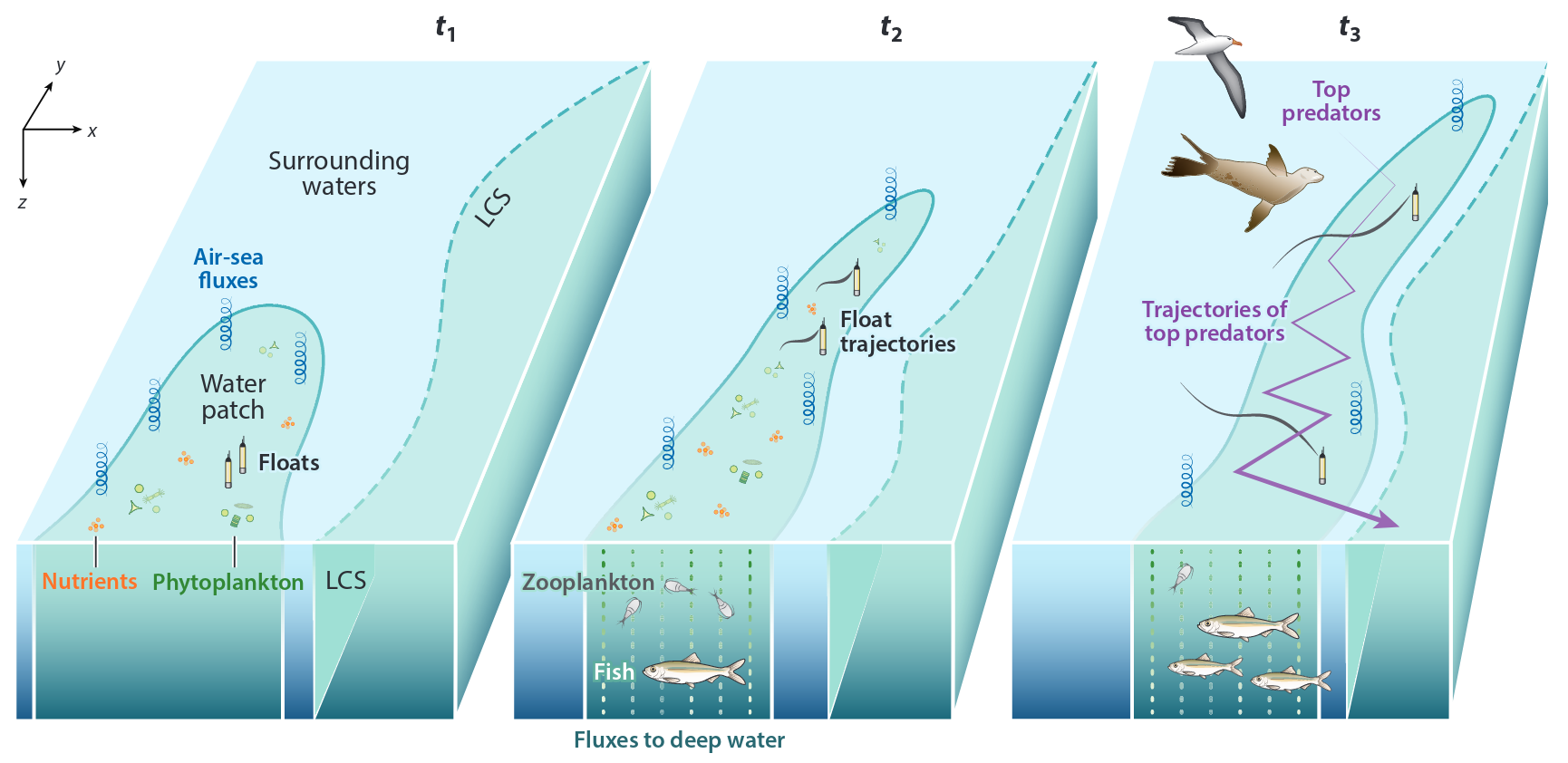 Schematics showing the evolution in space and time of a planktonic system embedded within a fine-scale water patch stirred by the ocean currents.
Schematics showing the evolution in space and time of a planktonic system embedded within a fine-scale water patch stirred by the ocean currents.
A satellite-based Lagrangian view on phytoplankton dynamics
Abstract
The well-lit upper layer of the open ocean is a dynamical environment that hosts approximately half of global primary production. In the remote parts of this environment, distant from the coast and from the seabed, there is no obvious spatially fixed reference frame for describing the dynamics of the microscopic drifting organisms responsible for this immense production of organic matter—the phytoplankton. Thus, a natural perspective for studying phytoplankton dynamics is to follow the trajectories of water parcels in which the organisms are embedded. With the advent of satellite oceanography, this Lagrangian perspective has provided valuable information on different aspects of phytoplankton dynamics, including bloom initiation and termination, spatial distribution patterns, biodiversity, export of carbon to the deep ocean, and, more recently, bottom-up mechanisms that affect the distribution and behavior of higher-trophic-level organisms. Upcoming submesoscale-resolving satellite observations and swarms of autonomous platforms open the way to the integration of vertical dynamics into the Lagrangian view of phytoplankton dynamics.